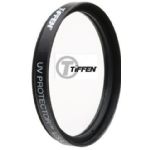Put Canon's mastery of image processing into a cinema-grade production-ready form factor and you get the EOS C700 Cinema Camera. This version of the C700 comes stocked with Canon's EF lens mount with a positive-locking mechanism, minimizing play found in traditional spring-loaded bayonet-style mounts. Beyond the lens mount is the first stop in the C700's imaging pipeline, the 4.5K CMOS image sensor. With a physical resolution exceeding that of DCI 4K and a dynamic range of approximately 15 stops, the C700 is ready for today's 4K and HDR productions.
What good is a sensor without the processing technology to back it up? The C700 is capable of 4K recording at 60p to CFast 2.0 cards using the XF-AVC format. Also available are Apple's well-regarded ProRes formats for direct-to-edit workflows. Raw recording is another possibility through Canon's separately available Codex Digital Recorder which simply clips onto the rear of the C700's modular design.
While the C700 is a fairly advanced piece of equipment, Canon has implemented a familiar user interface. Most basic functions can be accessed through the six buttons surrounding the screen. More advanced settings can be found using the simple selection dial and set buttons.
I/O options for nearly any application can be found on the C700's side panel. Video, audio, control, and power inputs and outputs are available for implementations ranging from ENG-style run-and-gun to high-budget cinema productions.
While the C700 is a production powerhouse all on its own, its modular design lets the user customize the form factor to fit their use case. The rectangular body has enough real-estate to be shoulder-mounted for handheld shooting or secured to a dovetail on professional grip equipment with ease. And for the first time on a Cinema EOS camera, native V-mount battery support is available via an installed IDX battery plate.
































































































































































